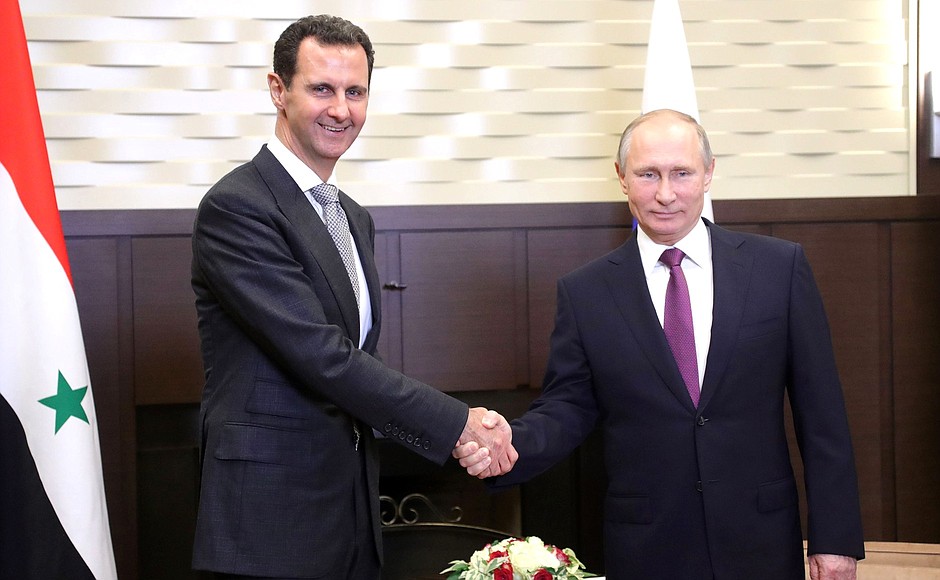Since its unceremonious expulsion from Egypt in 1972, Russia has mostly employed a laissez faire foreign policy in the Middle East. After forty-plus years of silence, Russia is back.
Russia joined the war in Syria on 1 October 2015, sending shockwaves around the world and adding another dimension to the conflict. A closer analysis of Russia’s interests in the Middle East reveals a superpower itching to dominate the world stage.
Russian interests in Syria
Since the collapse of the Soviet Union, many domestic and international skeptics doubted Russia’s military capability and ability to play a bigger role in world affairs. When Russia launched its first airstrikes in Homs in 2015, it demonstrated to the world that it is not afraid to make and execute bold decisions. Not only will Russian involvement in the Syrian conflict help protect the Kremlin’s interests, but the Kremlin believes it will also bring regional stability and, ultimately, world peace. This episode is indicative of Russia’s thirst for power and attention in the global arena.
Russia’s interests in Syria fall into four primary categories: fighting terrorism, maintaining friendship with Syria, maintaining ties to the Middle East, and positioning themselves as a counterweight to the United States.
Fighting terrorism: The Kremlin purports that countering terrorism is a top priority for Russia. It fears that reducing its military presence may create a vacuum for the Islamic State in Iraq and Syria to fill. Russia’s victory in Aleppo in December 2016, which ended more than four years of rebel rule, was celebrated by the Kremlin as a testament of its strength and commitment to fighting violent terrorism. Russia’s airstrikes combined with Syrian President Bashar al-Assad’s ground troops created a powerful duo that rebel groups could not resist.
Staying committed to an important ally: Syria was a Soviet ally throughout the Cold War and this is one of the main reasons al-Assad asked for Russia’s help. Until the conflict in Syria has been fully resolved—through a peace treaty or other means—the Kremlin believes that it must not abandon one of its closest friends. Russia fears that reducing troops and leaving Syria for potential threats from insurgent groups backed by the United States and ISIS would reflect poorly on its ability to deliver on its promises to its friends. Staying committed to an ally is thus a tactical move for Russia’s grand strategy in the Middle East.
Maintaining ties to the Middle East: Political connections are essential to exerting influence in Middle Eastern politics. By building regional coalitions, Russia believes it can achieve its political goals in the region. The Kremlin believes it has done that quite well. Despite criticism and concerns from regional capitals regarding Russia’s operations in Syria, the Kremlin has open communication with Egypt, Jordan, Turkey, Kuwait, Saudi Arabia, and especially Israel. Iran in particular shares Russia’s vision in Syria, even cooperating with Russia to fight ISIS. Iraq has followed in Iran’s footsteps of showing support, thereby boosting Russia’s confidence in the region. Many of Russia’s alliances in the region are bolstered by its business partnerships. In November 2017, Russia’s arms sales to Middle East countries spiked to record-high levels, with orders from Arab countries accounting for roughly 20 percent of Russian weapons’ exports. Russia has sought to compete with the United States in the arms market, selling fighter aircrafts, combat-transport helicopters, and defense systems to countries like the United Arab Emirates, Turkey, Saudi Arabia, Algeria, Egypt and Iraq.
Serving as counterweight to the United States: On 23 September 2017, Foreign Minister Sergey Lavrov called upon the United States to pull out after the impending defeat of the Islamic State in Syria. Russia continued to argue that its presence in Syria was legitimate, as they were invited by the Syrian president, while criticizing U.S. intervention as illegitimate. While both Russia and the United States are committed to fighting terrorism, it is obvious both countries define the term differently. This is demonstrated by the groups that each supports: Russia is backing Assad’s regime while the U.S. is backing the rebels. In so doing, Russia perceives its role in Syria as a counterweight to its Cold War adversary.
Russia should move beyond Cold War tactics
Beyond realpolitik, Russia, in proper Clausewitzian manner, hopes to assert its conservative values of traditionalism, support for sovereignty, and advocacy for a multipolar international system. These normative values stand in stark contrast to America’s liberal values of democracy, human rights, and a unipolar world.
Russia is growing tired of a unipolar world that tilts in America’s favor, instead advocating for a multipolar system where it sees itself as one of the rightful superpowers. Because Russia considers itself the only superpower that can ably confront the United States, Russia believes it must not leave Syria until full victory is achieved. In the eyes of the Kremlin, this includes not only defeating ISIS but pushing back on the American foreign agenda in the Middle East.
Russia’s sudden reengagement in the Middle East is no coincidence. Russia believes that its quest for greater power, recognition, and legitimacy as a superpower can be achieved by following America’s playbook: inserting itself into foreign conflicts. However, if great power status is what Russia aims to reclaim, it is better off leading a unique grand strategy than following in America’s footsteps. Exacerbating a conflict which endangers civilian lives, displaces innocent people, and destroys cities and cultural property is highly condemnable. Russia needs only to look back on its track record in the Middle East to realize that engaging in the Syrian conflict is a mistake.
